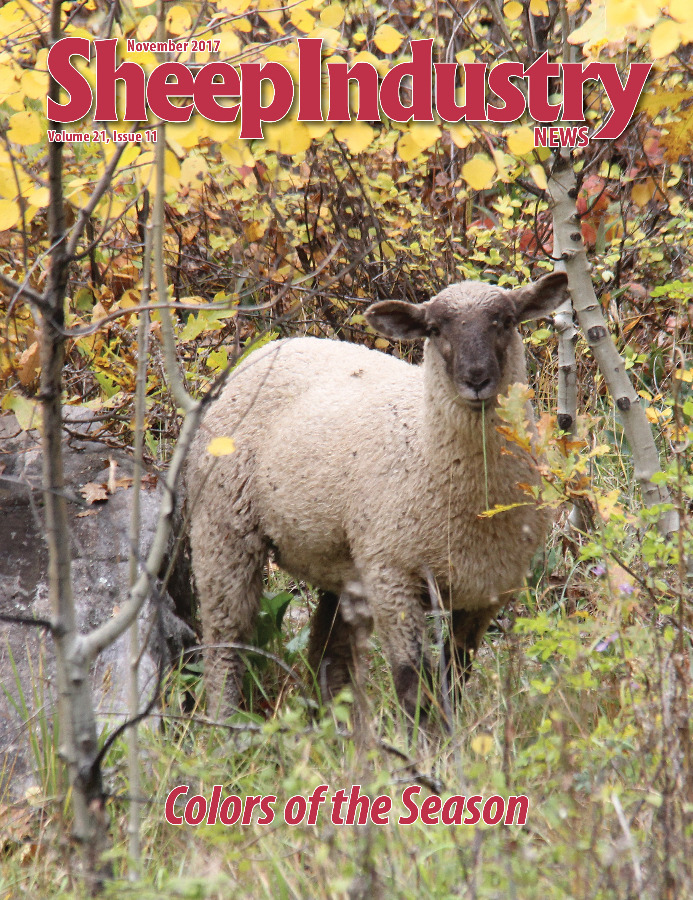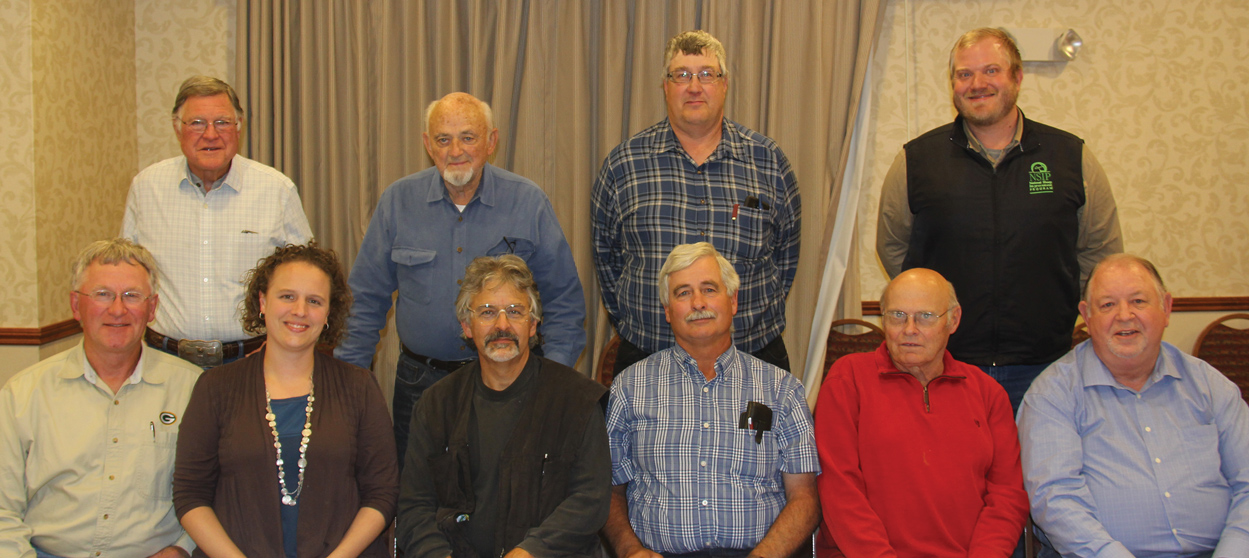
- November 2017
- President’s Notes
- NSIP, Breeds Find Common Goals
- NSIP Adds Searchable Database
- Sheep Prove More Reliable than Weather in Bayfield
- Cestari Hoping to Rebuild Wool Sheep Numbers Back East
- Tips for Culling & Selecting Ewes
- Young Entrepreneur: Katie Forrest
- Obituaries
- Around the States
- Market Report
- The Last Word
NSIP, Breeds Fine Common Goals
Kansas sheep producer Jeff Ebert showed up for a first-of-its-kind meeting between the National Sheep Improvement Program and various breed associations on Oct. 13 in Coalville, Utah, looking for answers.
As a representative of the American Hampshire Sheep Association, he wasn’t exactly sure how to merge the two industry factions into a cohesive coalition. As a member of the ASI Executive Board, however, he’s looking to do just that.
 “We have to find a way to show the value in both the breed associations and NSIP,” he said. “I’m looking for answers, but to be honest I only see a small percentage of our breeders who might be interested.”
“We have to find a way to show the value in both the breed associations and NSIP,” he said. “I’m looking for answers, but to be honest I only see a small percentage of our breeders who might be interested.”
Breed associations understand that concept all too well, as their own registries (in most cases) have seen declines in recent years. These groups spend time proving their own value to producers, and now they’re being asked to help prove NSIP’s, as well.
“I’m not here to push the program on every producer, because I realize we aren’t going to get every purebred producer to come aboard,” said NSIP Executive Director Rusty Burgett. “I’ve heard from producers with registered sheep who don’t understand the value in NSIP. And I’ve heard from NSIP producers who wonder why they need to register with a breed association. I hate to hear that on either side, because I think we need all of these groups as we try to grow and improve the American sheep industry.
“Education and communication are keys to the adoption of just about anything in the industry. That’s one of the strengths that the breed associations bring to the table. They are really good at getting information out to their members. They’re also usually pretty good at developing youth programs, so we need to combine those strengths with the educational value of NSIP and we’ll all come out further ahead. The best part about our meeting was just that we had all of these people sitting at the table working toward a common goal.”
Kim Chapman of the Utah Beef Improvement Association was on hand for the meeting to discuss how Expected Progeny Differences in beef compare to NSIP’s Estimated Breeding Values.
“They started developing EPDs in beef some 60 years ago,” Chapman told the group. “It started mostly on the dairy side, and it was the Holstein breed that really pushed the process along in the early years. It wasn’t until the 1980s that this really became a movement in the beef industry. That’s when the breed associations really stepped to the plate and pushed the process forward. Before that, we had the information, but there was this quandary about what cattle producers could really do with it.”
NSIP has already worked with several breed associations in securing ASI Let’s Grow grants that benefit both groups, such as a round two grant to the United Suffolk Sheep Association and a round three grant to the American Polypay Sheep Association, both of which were represented at the meeting.
Conversations in Utah centered around shared communication efforts between the two groups, as well as the development of performance classes that would incorporate NSIP data into the judging process.
The use of NSIP data would allow an opportunity to teach the next generation of sheep producers about its value from an early age.
“The whole point of all of this is to improve the American sheep industry,” said Let’s Grow Committee Chair Susan Shultz of Ohio, who was on hand for the meeting. “But we need you (the breed associations) to help us sell it. Some people are scared by the data that NSIP offers, but the young people coming up in this industry love data and what it can tell them about the sheep.”
Let’s Grow Coordinator Alan Culham of Michigan also encouraged the associations to remember that breed improvement is a top priority within their memberships, adding that NSIP data is a great way to judge improvement within the breed.
Burgett said its common now for commercial sheep buyers to demand NSIP numbers on any sheep they’re looking to buy, showing the immense value the organization’s data brings for sheep producers.
Overall, the meeting accomplished its goal of bringing the groups together for an initial conversation to get the ball rolling on collaboration.
“I was really happy with the turnout,” Burgett said. “Everyone was pretty optimistic, but we were also open and honest about the struggles we’ve had on both sides. I’m happy that we came to some conclusions about issues that can help both sides, and in the long run make the entire American sheep industry stronger.”

